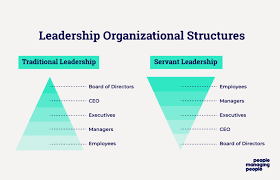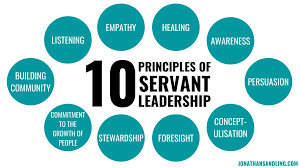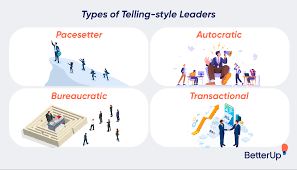10 things you need to know about the servant leadership theory
The servant leadership theory is a relatively new concept in the business world, but it’s one that is gaining momentum. Here are 10 things you need to know about servant leadership:
1. The term “servant leadership” was coined by Robert K. Greenleaf in 1970.
2. Servant leaders are focused on serving others, rather than on power or personal gain.
3. The servant leader strives to create a positive environment and build relationships of trust.
4. Servant leaders are often motivators and encouragers, working to bring out the best in those they lead.
5. One of the key tenets of servant leadership is that the leader must first be a servant; only then can he or she effectively lead others.
6. A servant leader must be competent and have a clear vision for where he or she wants to take the team or organization.
7. A key characteristic of servant leaders is humility; they see themselves as part of the team, not above it.
8. Because they focus on others’ needs, servant leaders are often good at conflict resolution and mediation.
9.Servant leaders typically have strong ethical values and integrity, which they strive to instill in those they lead.
10 .The goal of servant leadership is to create a more just and compassionate world
choicecenter leadership university
choicecenter leadership university is a servant leadership training program that helps individuals become better leaders by teaching them the principles of servant leadership. The program is based on the belief that all people have the potential to lead and serve others, and that everyone can benefit from learning about servant leadership. The program offers a variety of courses and workshops that cover topics such as the history and philosophy of servant leadership, the fundamentals of servant leadership, and how to put servant leadership into practice.
The servant leadership theory was first introduced by Robert K. Greenleaf in 197
. Servant leadership is a style of leadership in which the leader focuses on the needs of others, rather than on his or her own. The servant leader puts the needs of others first and works to help them reach their full potential.
The servant leadership theory has been gaining popularity in recent years, as more and more people are looking for ways to lead that are not focused on power or personal gain. This type of leadership can be seen in many different settings, from businesses to government organizations. Servant leaders are typically very compassionate and caring people who want to see others succeed.
If you are interested in learning more about servant leadership, there are many resources available online and in libraries. Greenleaf’s book, The Power of Servant Leadership, is a good place to start. Alternatively, there are plenty of articles and blog posts that discuss this topic in depth.
The theory is based on the belief that the role of the leader is to serve others, and that leadership is a process of helping people grow and develop.
The theory is based on the belief that the role of the leader is to serve others, and that leadership is a process of helping people grow and develop. The theory posits that leaders are not born, but made, and that anyone can learn to be a leader if they have the right attitude and motivation.
The key tenets of servant leadership are often described as being empathy, foresight, stewardship, courage, justice, and humility. These characteristics are said to enable a servant leader to better understand and respond to the needs of their followers. Additionally, servant leaders are thought to create an environment in which people can work together effectively for the common good.
The theory has been influential in both the business and nonprofit sectors, and has been used in a variety of settings, including education, healthcare, and government.
The theory has been influential in both the business and nonprofit sectors, and has been used in a variety of settings, including education, healthcare, and government. The theory posits that organizations are best able to achieve their goals when they focus on a few key areas and invest resources in those areas. This focus allows organizations to allocate resources where they will have the most impact and also makes it easier to hold employees accountable for results. The theory has been used to improve organizational performance in a number of ways, including increasing efficiency, reducing costs, and improving customer satisfaction.
There are a number of key concepts associated with the servant leadership theory, including empathy, trust, foresight, stewardship, and community building.

Empathy is the ability to understand and share the feelings of others. It is a key characteristic of servant leadership, as it allows leaders to see things from the perspective of those they are leading.
Trust is another important concept in servant leadership. Leaders who are trustworthy are more likely to be trusted by their followers. This trust allows for a deeper connection between leader and follower, and can lead to better communication and cooperation.
Foresight is the ability to see potential future events or trends. Servant leaders use their foresight to plan for the future needs of their followers. This planning helps ensure that followers will have what they need when they need it, and that they will be able to achieve their goals.
Stewardship is the responsible use of resources. Servant leaders take care of the resources entrusted to them by their followers, using them wisely and efficiently. This stewardship helps build trust between leader and follower, as well as ensuring that resources are used in a way that benefits all involved parties.
Community building is another key characteristic of servant leadership. Leaders who focus on building community create an environment where people feel connected to one another and work together for the common good. This sense of community can help
The theory has been critiqued for its lack of attention to power dynamics, and its focus on the individual rather than the collective.
The theory has been critiqued for its lack of attention to power dynamics, and its focus on the individual rather than the collective. Some argue that the theory does not adequately take into account the role of power in social interaction, and instead focuses too much on the individual. Others argue that the theory does not sufficiently consider how people interact with each other in groups, and instead focuses too much on individuals.
However, overall, the servant leadership theory remains an important and widely-used leadership model.
The servant leadership theory was first proposed by Robert K. Greenleaf in 1970, and since then it has been widely used as a leadership model by organizations and individuals around the world. The theory is based on the idea that the leader’s primary purpose is to serve others, and that leaders should be focused on meeting the needs of their followers.
While there are some criticisms of the servant leadership theory, overall it remains an important and widely-used leadership model. Servant leaders have been shown to be more effective than traditional leaders in a variety of settings, and the theory continues to be influential in both academic and practical circles.
service leadership
In order to be an effective leader, one must first be a good servant. This is the fundamental principle behind the servant leadership theory.
The theory was first proposed by Robert K. Greenleaf in his essay, “The Servant as Leader.” In it, he outlined the characteristics and behaviors of a servant leader.
Since then, the theory has been adopted by organizations and individuals across the globe. Here are 10 things you need to know about servant leadership:
1. Servant leaders are humble. They do not seek power or recognition for themselves. Instead, they serve others and help them reach their potential.
2. Servant leaders are focused on others’ needs. They seek to understand what their followers want and need, and they strive to meet those needs.
3. Servant leaders are good communicators. They listen well and communicate effectively in order to build trust and rapport with their followers.
4. Servant leaders are empathetic. They care about others and show compassion for their plight. This allows them to better understand and connect with their followers.
5. Servant leaders are good at problem-solving. They use creative thinking to identify solutions that will benefit everyone involved.
6. Servant leaders are decision-makers. When faced with a decision, they carefully consider all options before making a choice that is in the best interest of all concerned.






